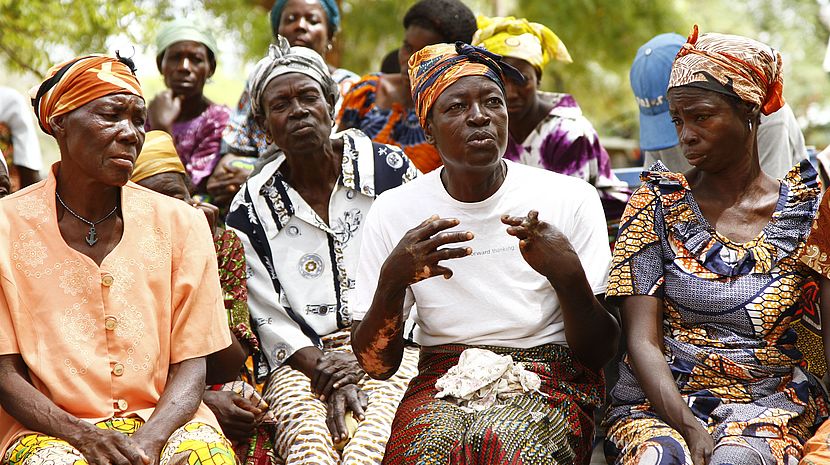12.03.2019 UN Statistical Commission “Better Data Better Lives”

©CBM
The UN Statistical Commission was held from 5-8 March 2019 at UN Headquarters in New York with the theme “Better Data Better Lives.” The event was particularly relevant as it marked the 50th session of the Statistical Commission.
On the first day of the meeting, the SDG indicators and their progress were discussed, which centered around the ongoing work on the implementation of the global SDG indicator framework. Many Member States expressed support for the work of the IAEG-SDGs, but showed concern about lack of data in some situations and also that some indicators are not measurable. Important to note that in 2020, there will be a review of the global indicators. In terms of disability data, Ghana and Suriname expressed concern over indicator 16.7.1 and the challenge of disaggregation by disability of this particular indicator: “Proportions of positions (by sex, age, persons with disabilities and population groups) in public institutions (national and local legislatures, public service, and judiciary) compared to national distributions.”
As a fruitful outcome from long-term advocacy, with CBM as a key partner, an official background document was shared at the meeting over Data Disaggregation and SDG Indicators: Policy Priorities and Current and Future Disaggregation Plans.
Disability data are strongly included in the document, such as the availability of current and future indicators that disaggregate data by disability (15 additional indicators – refer below for details*). Current indicators collected are on social protection and unemployment rate (1.3.1 and 8.5.2). Read here for more details on the SDG indicators. Furthermore, as the Stakeholder Group of Persons with Disabilities (SGPwD) we directly inputted into the section on policy priority areas for different population groups (section g). The SGPwD identified five key policy areas to be disaggregated by disability to support policymakers to address gaps and amend existing policies and regulations. These include: poverty eradication, education, employment, health, and accessibility, which were identified in a consultative manner and from a larger priority list of indicators.
On 6 March, CBM International, along with the Stakeholder Group of Persons with Disabilities, International Disability Alliance, the Washington Group, and the Department of International Development (DFID) co-sponsored the side event “Making disability visible in statistics.” The side event focused on bridging the gap between policymakers, civil society, and statisticians to develop evidence-based policies and thus improve the lives of persons with disabilities. The event highlighted current activities by NSOs, UN agencies, development ministries, organizations of persons with disabilities, and NGOs to improve the collection and use of disability data to meet the requirements of the CRPD and the SDGs. The Washington Group highlighted its collaboration with CBM, and the presentation given by IDA centered on IDA and CBM joint work on disability data.
*Current indicators that disaggregate data by disability
1.3.1, 8.5.2
- 1.3.1 Proportion of population covered by social protection floors/systems, by sex, distinguishing children, unemployed persons, older persons, persons with disabilities, pregnant women, newborns, work-injury victims and the poor and the vulnerable
- 8.5.2 Unemployment rate, by sex, age and persons with disabilities
Availability of future indicators that disaggregate data by disability
1.5.1, 5.2.1, 5.2.2, 8.5.1, 10.2.1, 11.1.1, 11.2.1, 11.5.1, 11.7.1, 11.7.2, 13.1.1, 16.6.2, 16.7.1, 16.7.2, 17.19.2
- 1.5.1 Number of deaths, missing persons and directly affected persons attributed to disasters per 100,000 population
- 5.2.1 Proportion of ever-partnered women and girls aged 15 years and older subjected to physical, sexual or psychological violence by a current or former intimate partner in the previous 12 months, by form of violence and by age
- 5.2.2 Proportion of women and girls aged 15 years and older subjected to sexual violence by persons other than an intimate partner in the previous 12 months, by age and place of occurrence
- 8.5.1 Average hourly earnings of female and male employees, by occupation, age and persons with disabilities
- 10.2.1 Proportion of people living below 50 per cent of median income, by sex, age and persons with disabilities
- 11.1.1 Proportion of urban population living in slums, informal settlements or inadequate housing
- 11.2.1 Proportion of population that has convenient access to public transport, by sex, age and persons with disabilities
- 11.5.1 Number of deaths, missing persons and directly affected persons attributed to disasters per 100,000 population
- 11.7.1 Average share of the built-up area of cities that is open space for public use for all, by sex, age and persons with disabilities
- 11.7.2 Proportion of persons victim of physical or sexual harassment, by sex, age, disability status and place of occurrence, in the previous 12 months
- 13.1.1 Number of deaths, missing persons and directly affected persons attributed to disasters per 100,000 population
- 16.6.2 Proportion of population satisfied with their last experience of public services
- 16.7.1 Proportions of positions (by sex, age, persons with disabilities and population groups) in public institutions (national and local legislatures, public service, and judiciary) compared to national distributions
- 16.7.2 Proportion of population who believe decision-making is inclusive and responsive, by sex, age, disability and population group
- 17.19.2 Proportion of countries that (a) have conducted at least one population and housing census in the last 10 years; and (b) have achieved 100 per cent birth registration and 80 per cent death registration